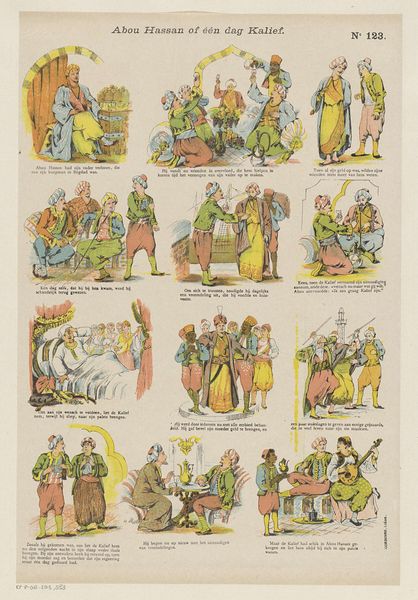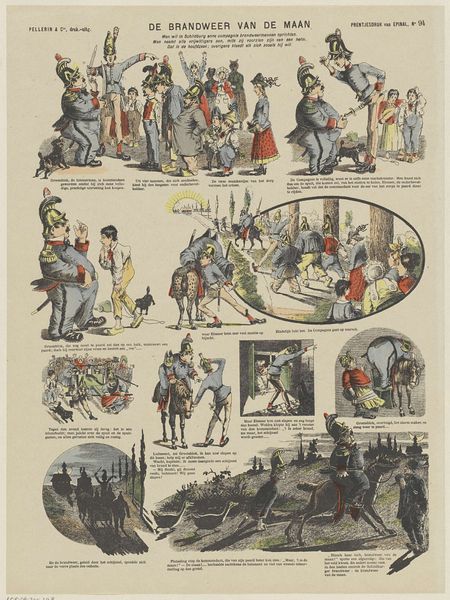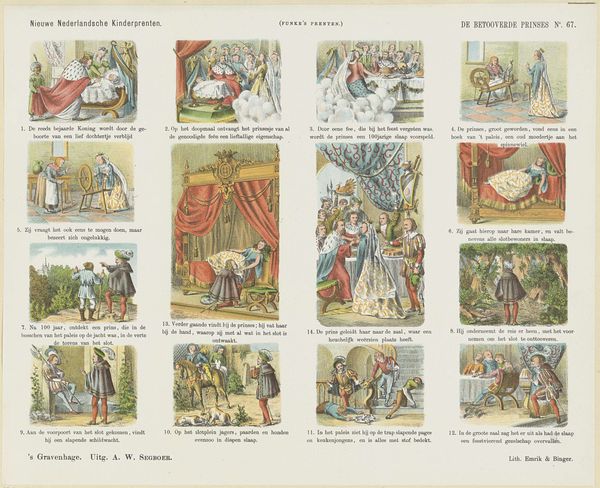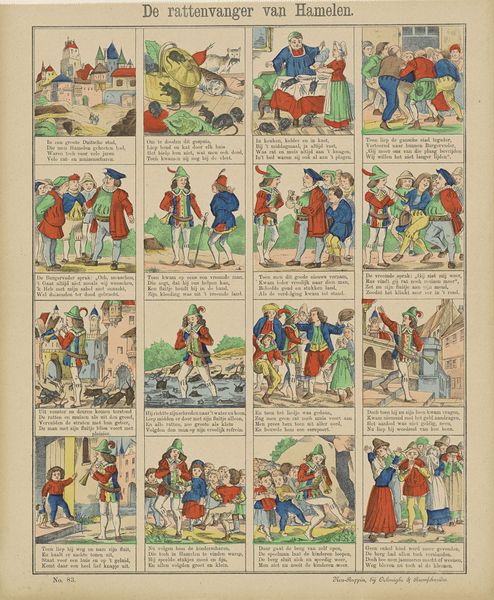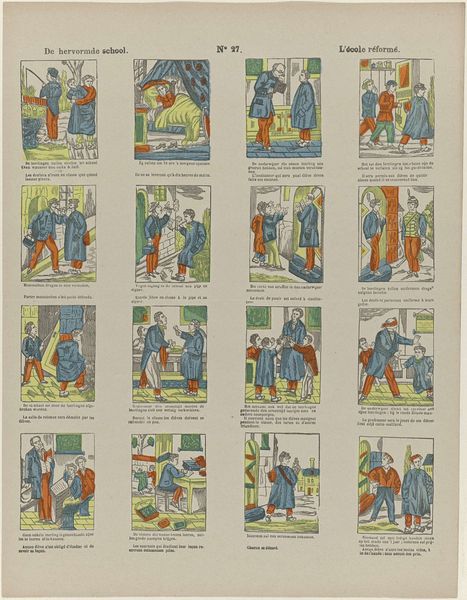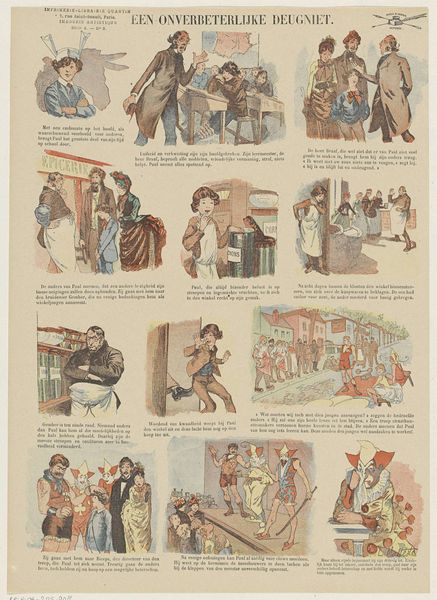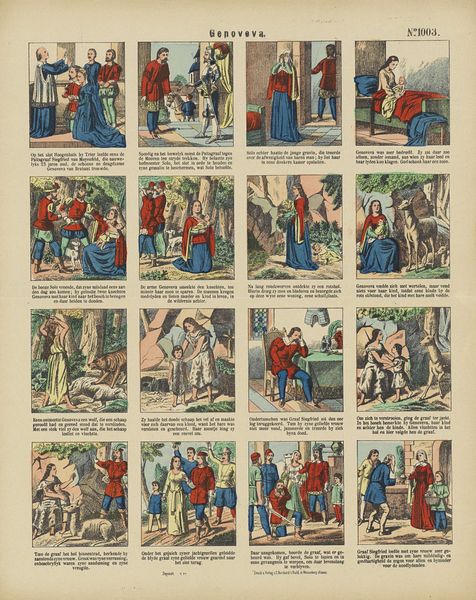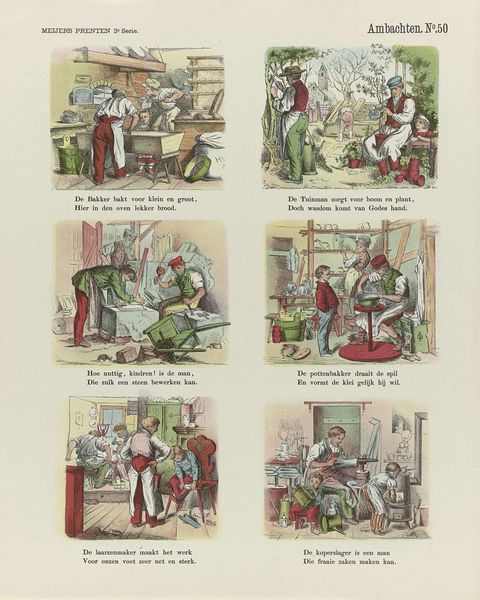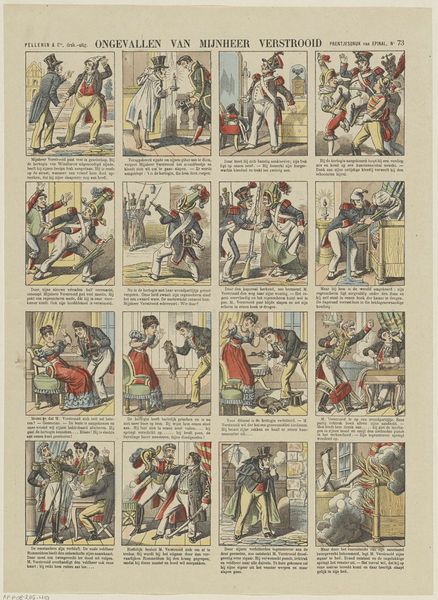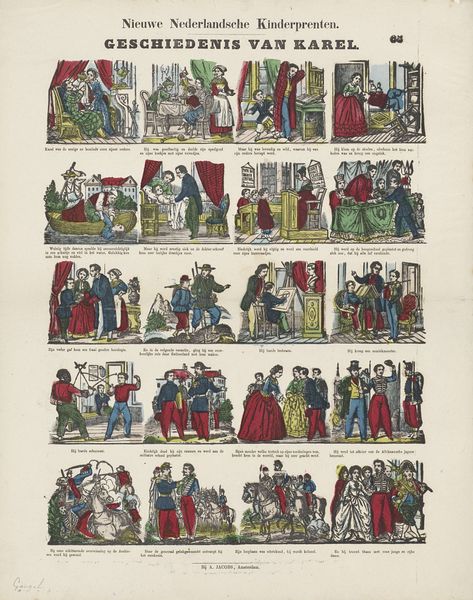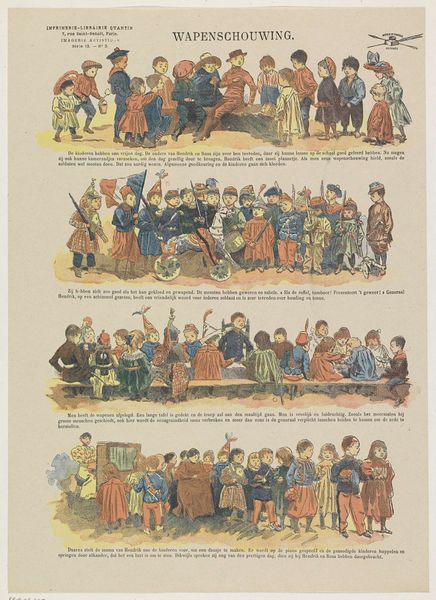
#
narrative-art
# print
#
genre-painting
Dimensions: height 427 mm, width 341 mm
Copyright: Rijks Museum: Open Domain
Editor: This is "Het Mislukte Bezoek" from 1881 by De Ruyter & Meijer, presented as a print. It looks like a comic strip almost, telling a story. It’s humorous, a little chaotic, and I'm wondering how much the medium, a relatively inexpensive print, influenced the artist's decisions. What do you see in this piece? Curator: For me, it’s interesting to think about this print in the context of 19th-century Dutch society. These sequential images, widely distributed, offer insight into the daily lives and social anxieties of the era. Look at the scenes depicted—the bustling street, the market, the mishaps. It makes me think about the industrial production of these kinds of narrative artworks; what do we know about the division of labour that created this? Editor: Division of labor, interesting. So you're saying that its form is really tied to the material conditions of its production? The choice of it being a cheap print that many can buy affects it too, rather than being a precious oil painting on a wall for a select few? Curator: Exactly! And let's think about the target audience. Who was consuming these prints? How did their social class and access to this kind of visual storytelling shape their understanding of the world? Editor: So it becomes not just about the image itself, but about its accessibility and how it reflects the values of a specific segment of society, and this is driven by how it's materially produced and distributed. Curator: Precisely. It's about labor, materiality, and consumption converging to create a shared visual language. Editor: Wow, I never thought about a simple print carrying so much information about society through its materials. Curator: These images reveal so much about the structures that supported and shaped the art in its making.
Comments
No comments
Be the first to comment and join the conversation on the ultimate creative platform.
